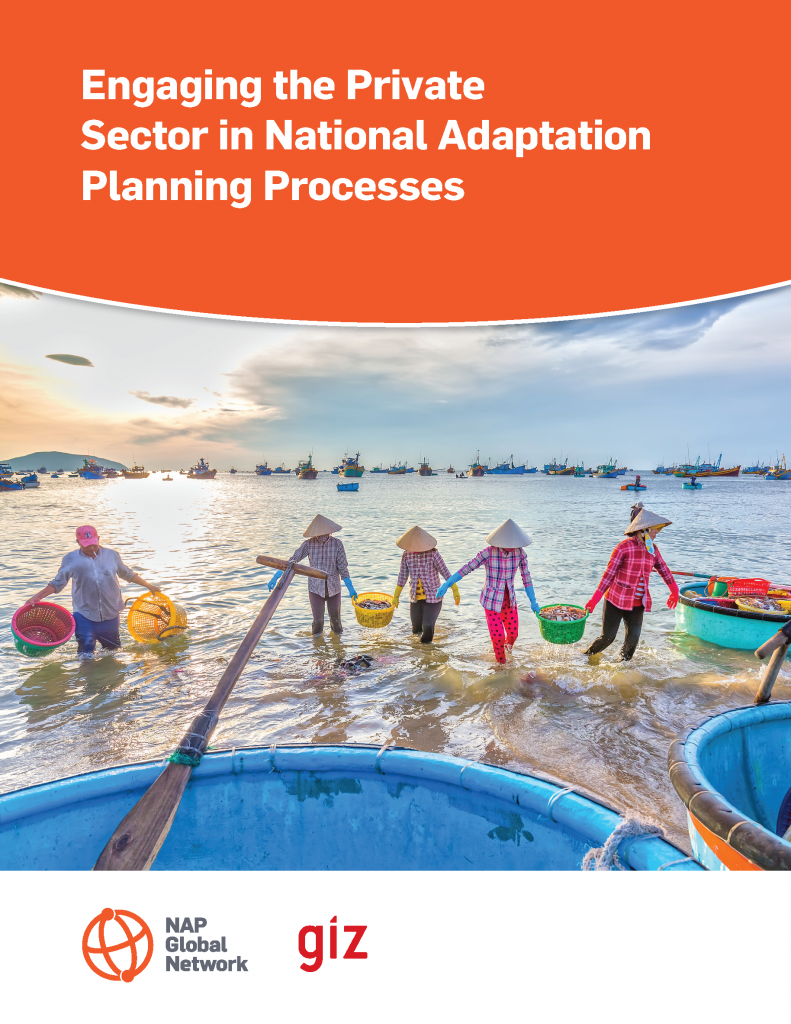
Engaging the Private Sector in National Adaptation Planning Processes
Adapting to the impacts of climate change, whether at the national, sub-national or community level, is not the responsibility of national governments alone. It requires the coordinated input of multiple stakeholders, including local authorities, development partners, communities and civil society. Businesses and investors also need to be involved, as they are the key engines of economic growth in developing countries, accounting for 60 per cent of gross domestic product, 80 per cent of capital flows and 90 per cent of jobs. They will be relied on to create the jobs needed to support adaptation, to develop the products and services needed for societies to become more climate-resilient, and to finance—directly or indirectly—many adaptation actions. The strategic and well-informed inclusion of the private sector in climate change adaptation planning and activities must be a key part of all countries’ efforts to adapt to the impacts of climate change; they will be key partners in the design, financing and implementation of adaptation priorities.
The National Adaptation Plan process differs from past processes in that it offers a medium- and long-term vision of national adaptation action, aligned with development plans and with a supporting regulatory and policy framework. If properly communicated, it foregrounds a country’s key climate vulnerabilities. It therefore can provide all stakeholders, including the private sector, with a stable and predictable roadmap for a government’s priorities on national adaptation.
This study aims to offer guidance to governments and their partners on how to engage the private sector in the NAP process. Private sector engagement in the NAP process, for the purposes of this paper, is defined as the meaningful involvement of private sector actors—ranging in size, sector, motivation and whether they operate in the formal or informal sector—in the planning, implementation, and monitoring and evaluation of national adaptation planning processes. Governments remain the overall owners and drivers of the NAP process. However, for NAPs to be successfully implemented and climate resilience strengthened, private sector actors will need to be involved.
Publisher: International Institute for Sustainable Development (IISD)